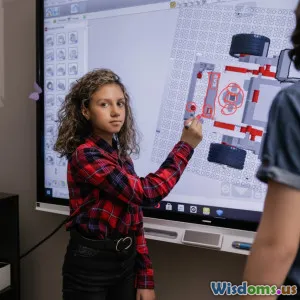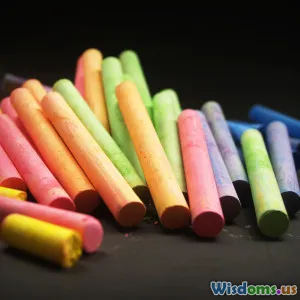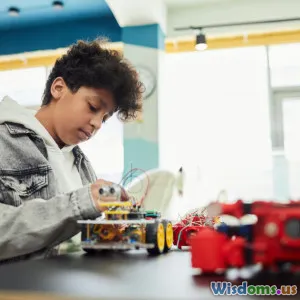
Creativity in Classroom Learning
6 min read Explore innovative strategies to enhance creativity in classroom learning and foster an engaging educational environment. (0 Reviews)
Creativity in Classroom Learning
In the ever-evolving landscape of education, creativity is a vital component that can spark engagement, innovation, and critical thinking among students. As educators seek to prepare students for a rapidly changing world, harnessing creativity within the classroom has become more important than ever. This article explores various strategies and insights into fostering creativity in classroom learning, ensuring that students not only absorb information but also apply it in imaginative and meaningful ways.
The Importance of Creativity in Education
Creativity is not just about arts and crafts; it encompasses problem-solving, adaptability, and the ability to think outside the box. According to a study by the World Economic Forum, creativity is among the top three skills employers seek in future job candidates. Therefore, integrating creativity into the classroom is essential for preparing students for their future careers.
Moreover, creativity promotes deeper learning. When students engage in creative processes, they are more likely to retain information and develop a passion for learning. Creative learning experiences can transform mundane subjects into exciting explorations, making education more relevant and enjoyable.
Strategies to Foster Creativity
1. Encourage Open-Ended Questions
Instead of asking questions that have a single correct answer, educators can promote open-ended questions that stimulate discussion and exploration. For example, rather than asking, "What is the capital of France?" a more creative approach would be, "How might the history of France influence its present-day culture?" This encourages students to think critically and engage in deeper learning.
2. Integrate Interdisciplinary Learning
Interdisciplinary learning combines multiple subjects, allowing students to make connections between different fields and apply their knowledge creatively. For instance, a project that merges science and the arts could involve students creating a sculpture that represents a scientific concept, such as the structure of DNA. Such projects encourage students to think creatively and apply their knowledge innovatively.
3. Use Technology to Enhance Creativity
Incorporating technology in the classroom can provide students with tools to express their creativity. Platforms like coding software, graphic design tools, and digital storytelling applications enable students to create projects that showcase their learning in unique ways. For example, students can create a video presentation or a digital art piece instead of a traditional essay.
4. Create a Safe Space for Creativity
A supportive classroom environment is crucial for fostering creativity. Educators should encourage students to express their ideas without fear of judgment. This can be achieved by celebrating all attempts at creativity, providing constructive feedback, and encouraging collaboration among students. Group activities that require brainstorming and collective problem-solving can also enhance creativity and build teamwork skills.
5. Implement Project-Based Learning
Project-based learning (PBL) allows students to explore real-world problems and challenges through creative solutions. For instance, students could work on a community service project that addresses local needs, thereby utilizing their creativity to develop innovative strategies. PBL not only enhances creativity but also fosters critical thinking, collaboration, and communication skills.
Real-World Examples
Schools around the world are successfully integrating creativity into their curricula. For example, the High Tech High network in California emphasizes project-based learning and interdisciplinary collaboration, resulting in students who are adept at problem-solving and innovation. Similarly, Finland's education system encourages less standardized testing and more emphasis on creative learning approaches, leading to higher student satisfaction and performance.
Conclusion
Fostering creativity in classroom learning is essential for preparing students for the complexities of the modern world. By implementing strategies that encourage open-ended questioning, interdisciplinary learning, and technology use, educators can create an environment that nurtures creativity and critical thinking. As we continue to navigate the challenges of education, prioritizing creativity will not only enhance student engagement but also equip learners with the skills they need to thrive in the future.
By embracing creativity in the classroom, we are not just teaching students; we are inspiring the innovators, leaders, and thinkers of tomorrow. Together, we can cultivate a generation that values creativity as a cornerstone of their educational journey.
Rate the Post
User Reviews
Other posts in Creativity in Education
Popular Posts


















